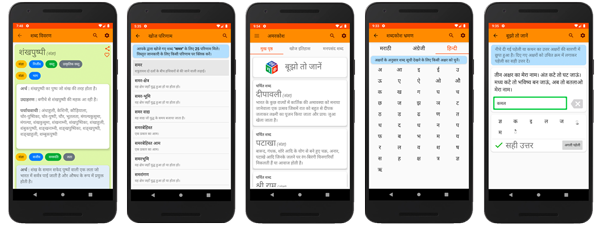Mandatory Road Signs, which prohibit people from taking certain actions or put any kind of limit are called Prohibitory Road Sign. Prohibitory signs have circular shape. Though there are few exceptions to circular shape convention, STOP and YIED / GIVE WAY are examples of such exceptions. They have red coloured border and background in white colour. In the middle of sign a symbol is drawn in black colour, which is crossed by a red coloured line.
Failure to obey prohibitory signs can have dangerous results and it may cause harm of life and property. Disobeying Mandatory Signs is considered violation of traffic rules and offenders may be punished.
Prominent Prohibitory Road signs are listed here along with their brief explanation.
Stop
 Stop the vehicle completely, look around and move ahead when safe and allowed. There could be another info below this sign to inform whether STOP is applicable 1 way, 2 way or all way.
Stop the vehicle completely, look around and move ahead when safe and allowed. There could be another info below this sign to inform whether STOP is applicable 1 way, 2 way or all way.
Yield / Give way
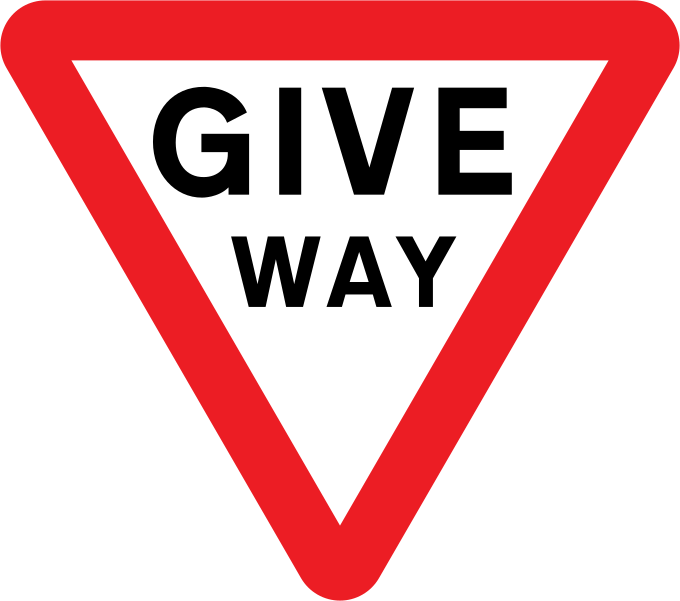 This sign is generally available before roundabout or when entering into a major road. Enter the road / roundabout after the traffic that is already there moves ahead. Vehicle already in the street (mostly on your right side) has right of way.
This sign is generally available before roundabout or when entering into a major road. Enter the road / roundabout after the traffic that is already there moves ahead. Vehicle already in the street (mostly on your right side) has right of way.
No Entry
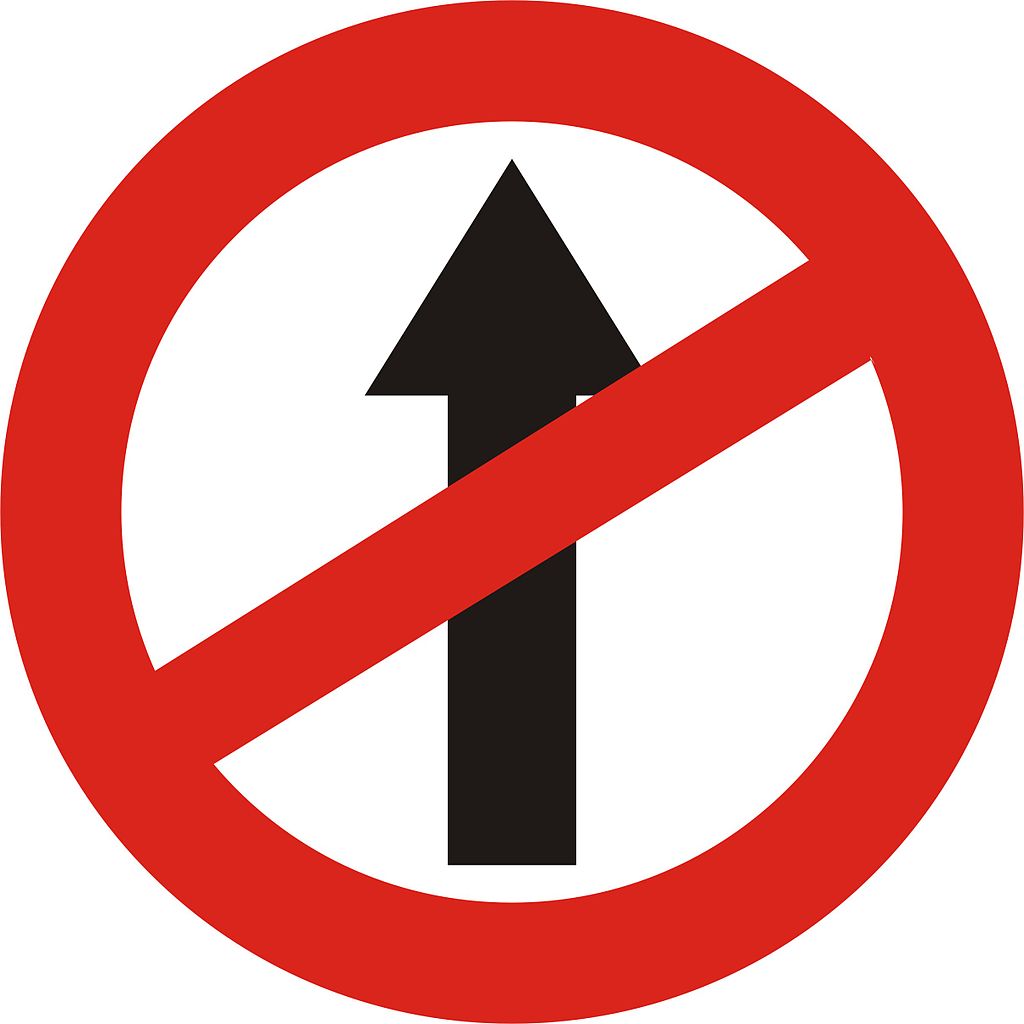 Do not enter into the street as vehicular traffic is not allowed. Take a detour instead, if you have to go ahead in that direction.
Do not enter into the street as vehicular traffic is not allowed. Take a detour instead, if you have to go ahead in that direction.
No U-Turn
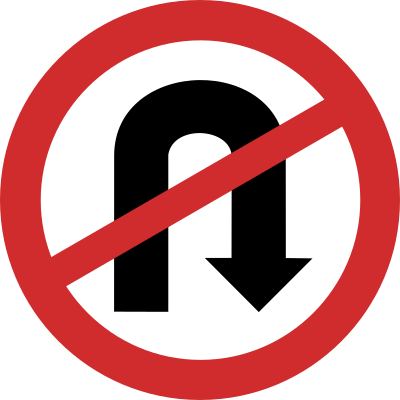 Don't take U-Turn at the intersection or gap in the median. Probably there is not enough space for taking turn or it may obstruct traffic flow.
Don't take U-Turn at the intersection or gap in the median. Probably there is not enough space for taking turn or it may obstruct traffic flow.
No Left Turn
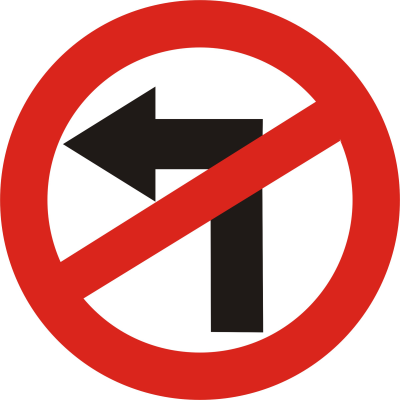 Don't take Left turn into the street, it is prohibited.
Don't take Left turn into the street, it is prohibited.
No Right Turn
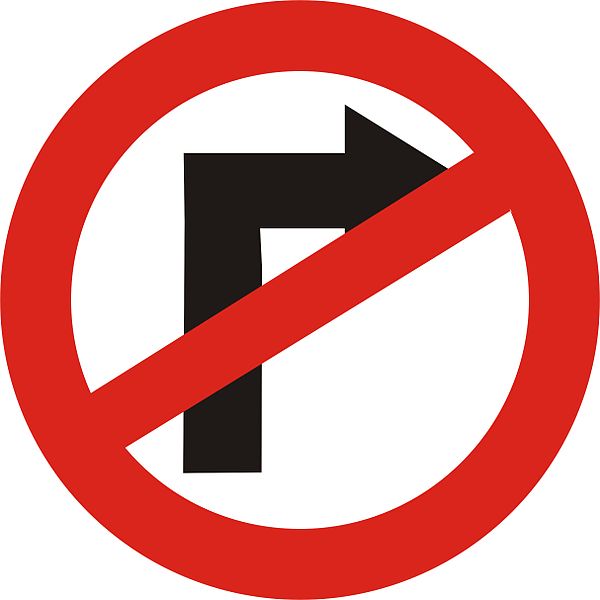 Don't take Right turn into the street, it is prohibited.
Don't take Right turn into the street, it is prohibited.
No Overtaking
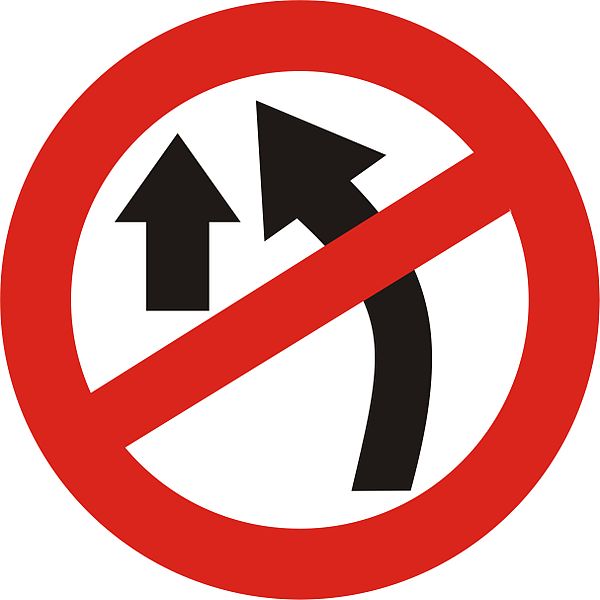 Don't overtake other vehicles on this stretch of the road. As it may not be safe.
Don't overtake other vehicles on this stretch of the road. As it may not be safe.
No Horn
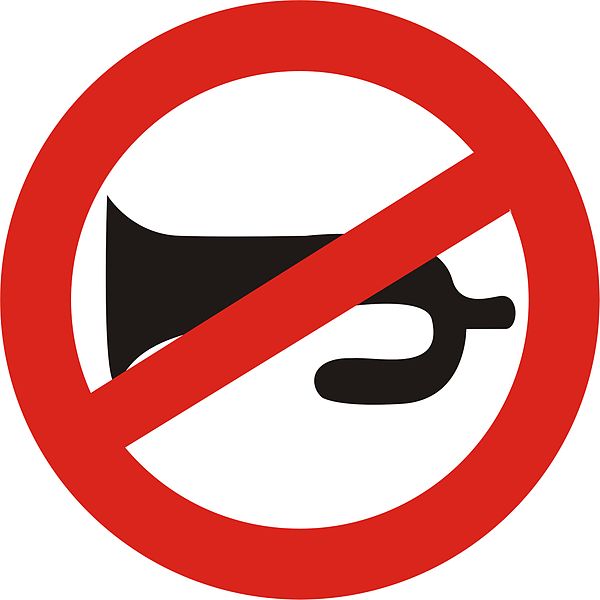 Don't blow the horn, silence needs to be maintained in this area. Generally this sign is found near schools and hospitals.
Don't blow the horn, silence needs to be maintained in this area. Generally this sign is found near schools and hospitals.
No Parking
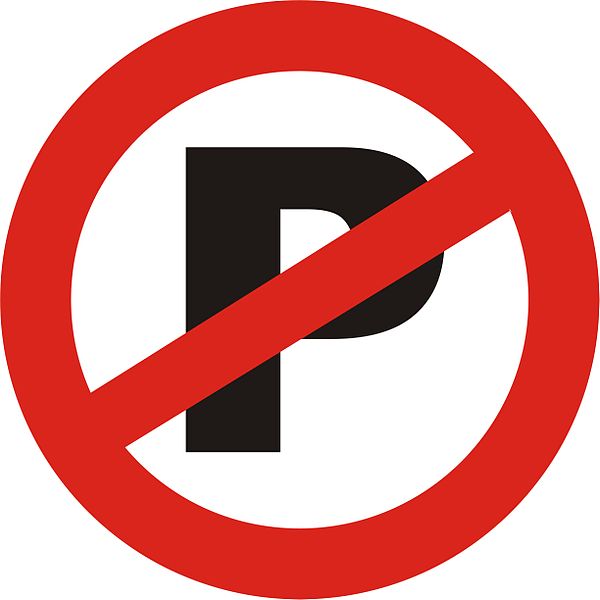 Don't park vehicle on this stretch of the road. It may hamper normal traffic flow or cause accident. Parked vehicles may be towed away by police.
Don't park vehicle on this stretch of the road. It may hamper normal traffic flow or cause accident. Parked vehicles may be towed away by police.
No Stopping or Standing
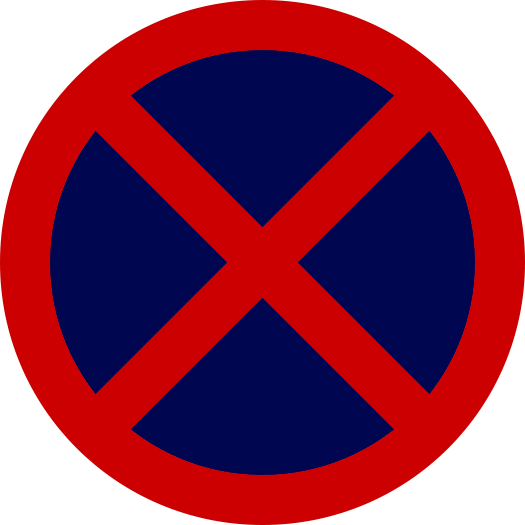 Don't stop vehicle on this stretch of the road neither for standing nor for parking. It may hamper normal traffic flow or cause accident.
Don't stop vehicle on this stretch of the road neither for standing nor for parking. It may hamper normal traffic flow or cause accident.
Speed Limit
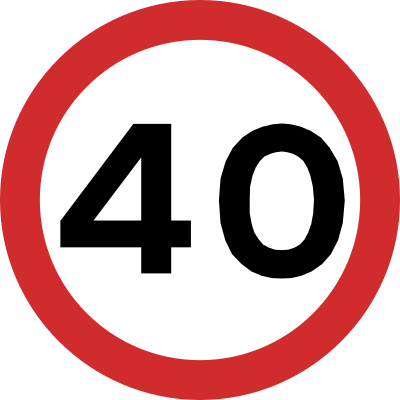 Maximum allowed speed (in km/h) is limited by the number on the sign. Unless there is too much traffic, don't drive too slow as well.
Maximum allowed speed (in km/h) is limited by the number on the sign. Unless there is too much traffic, don't drive too slow as well.
Vehicle Length Limit
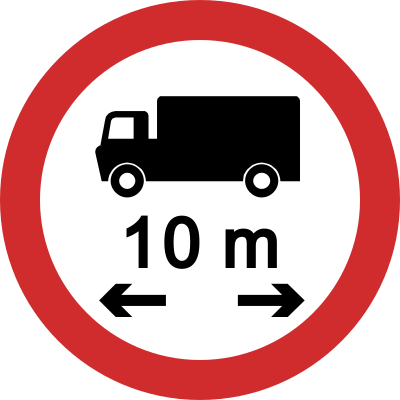 Vehicles longer than the length mentioned in sign, may not be able to safely pass this road. There could be sharp turns where longer vehicles may not be able to navigate properly.
Vehicles longer than the length mentioned in sign, may not be able to safely pass this road. There could be sharp turns where longer vehicles may not be able to navigate properly.
Vehicle Width Limit
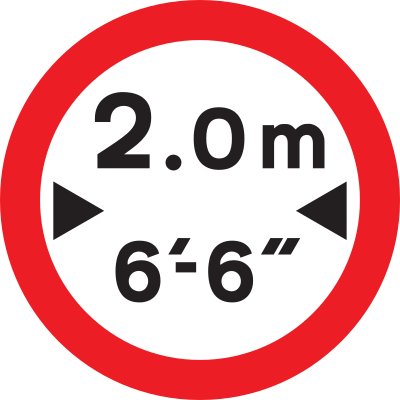 Vehicles wider than the length mentioned in sign are not allowed. Wider vehicles may not be able to pass through the narrow street or bridge.
Vehicles wider than the length mentioned in sign are not allowed. Wider vehicles may not be able to pass through the narrow street or bridge.
Vehicle Height Limit
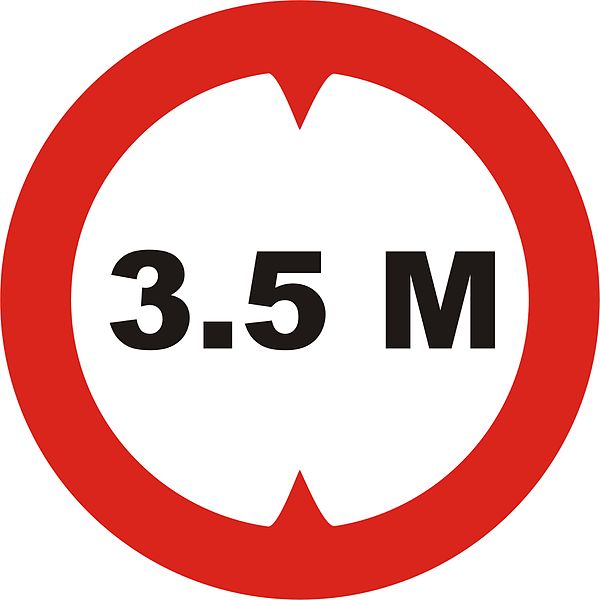 Vehicles taller than the height mentioned in sign are not allowed. Taller vehicles may not be able to pass through as there could be a low height bridge, power line or something else.
Vehicles taller than the height mentioned in sign are not allowed. Taller vehicles may not be able to pass through as there could be a low height bridge, power line or something else.
Vehicle Load Limit
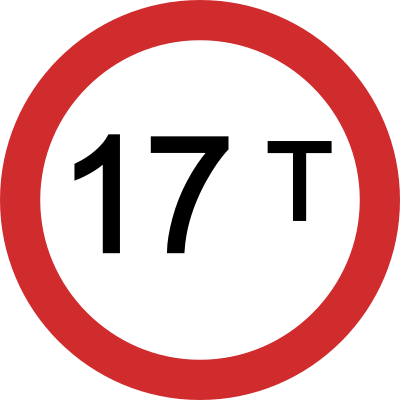 Only those vehicles are allowed whose weight is less than or equal to what is mentioned on the sign. Road or bridge may not be able to bear the weight of the heavier vehicles.
Only those vehicles are allowed whose weight is less than or equal to what is mentioned on the sign. Road or bridge may not be able to bear the weight of the heavier vehicles.
Axle Weight Limit
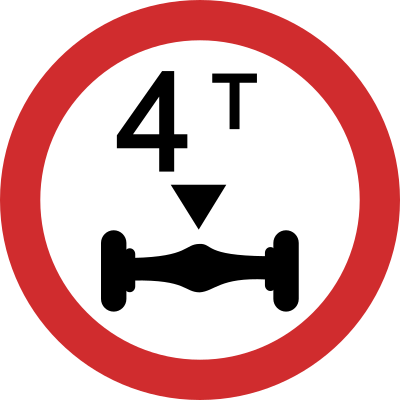 This sign is generally found before a bridge. It indicate the load that bridge can bear. Vehicles having axle load more than the limit should not use the bridge.
This sign is generally found before a bridge. It indicate the load that bridge can bear. Vehicles having axle load more than the limit should not use the bridge.
Pedestrian Prohibited
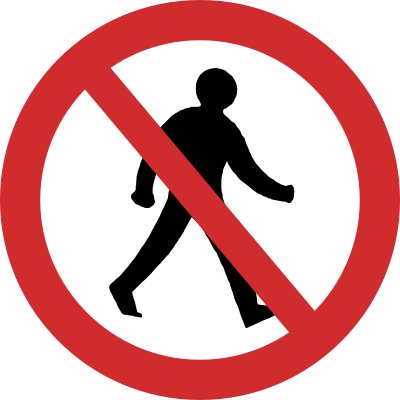 People walking on foot are not allowed. It may not be safe for them to be there. Generally it is found on highways and busy intersections. There might be alternate way available to cross the road.
People walking on foot are not allowed. It may not be safe for them to be there. Generally it is found on highways and busy intersections. There might be alternate way available to cross the road.
No Motor Vehicle
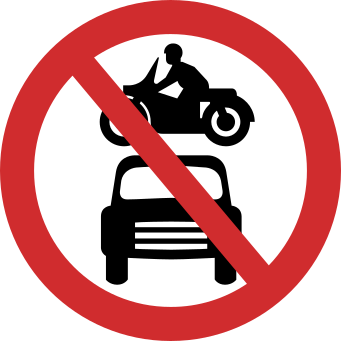 Motor vehicles are not allowed in this street, this is a no traffic zone. Generally this is used for crowded market streets where only pedestrian traffic is allowed.
Motor vehicles are not allowed in this street, this is a no traffic zone. Generally this is used for crowded market streets where only pedestrian traffic is allowed.
Mandatory Road Signs that provide direction to traffic are explained in detail here.



